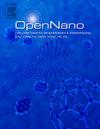Anti-cancer activity of Kaempferia galanga L.–loaded polydopamine nanoparticles against colorectal cancer
Q2 Pharmacology, Toxicology and Pharmaceutics
引用次数: 0
Abstract
Kaempferia galanga L. (KGL) is an aromatic ginger that has been used as a medicinal plant. Specifically, KGL possesses anti-inflammatory, antioxidant, anti-bacterial, and anti-cancer effects. However, the key component of KGL, ethyl p‑methoxy cinnamate (EPMC), is insoluble in water, resulting in low bioavailability. Hence, a nano-drug delivery system is used to enhance KGL activities. This study aimed to employ polydopamine (PDA) nanoparticles as a carrier for KGL delivery to improve its anti-cancer activity against colorectal cancer cells. PDA- and PDA nanoparticle–loaded KGL (PDA-KGL) were synthesized using a spontaneous oxidation process. The physicochemical properties of the PDA-KGL were characterized by dynamic light scattering methods. The anti-cancer activity of PDA-KGL was evaluated in HT-29, a colorectal cancer (CRC) cell line. Average hydrodynamic sizes of PDA and PDA-KGL were 236.2 ± 1.2 and 316.6 ± 2.0 nm, respectively, and the zeta potential of PDA and PDA-KGL were -23.0 ± 0.4 and -39.5 ± 0.6 mV, respectively. The morphology of PDA-KGL observed under TEM was spherical in shape. Anti-proliferative activity was monitored in HT-29 cells using MTT and 3D tumor spheroid assays. PDA-KGL strongly inhibited cell viability of HT-29 cells compared to free KGL and PDA treatments. PDA-KGL induced apoptosis in HT-29 cells as shown by an Annexin V binding assay. In addition, PDA-KGL suppressed the invasive ability of HT-29 cells compared to free KGL or PDA, which was determined by a transwell invasion assay. Taken together, it implies that PDA-KGL might be used as a nano-drug delivery approach for colorectal cancer treatment.

山奈高良l -负载聚多巴胺纳米颗粒对结直肠癌的抗癌作用
山柰属高良姜(KGL)是一种芳香姜,已被用作药用植物。具体来说,KGL具有抗炎、抗氧化、抗菌和抗癌作用。然而,KGL的关键成分对甲氧基肉桂酸乙酯(EPMC)不溶于水,导致生物利用度低。因此,纳米给药系统被用来增强KGL的活性。本研究旨在利用聚多巴胺(PDA)纳米颗粒作为KGL的载体,提高其对结直肠癌细胞的抗癌活性。采用自然氧化法合成了PDA-和PDA纳米颗粒负载的KGL (PDA-KGL)。采用动态光散射方法对聚乳酸- kgl的物理化学性质进行了表征。在结直肠癌(CRC)细胞系HT-29中评价了PDA-KGL的抗癌活性。PDA和PDA- kgl的平均水动力尺寸分别为236.2±1.2和316.6±2.0 nm, zeta电位分别为-23.0±0.4和-39.5±0.6 mV。透射电镜观察到PDA-KGL的形貌为球形。使用MTT和3D肿瘤球体测定法监测HT-29细胞的抗增殖活性。与游离KGL和PDA处理相比,PDA-KGL对HT-29细胞活力有较强的抑制作用。Annexin V结合实验显示,PDA-KGL诱导HT-29细胞凋亡。此外,与游离KGL或PDA相比,PDA-KGL抑制了HT-29细胞的侵袭能力,这是通过transwell侵袭实验确定的。综上所述,这意味着PDA-KGL可能作为一种纳米药物递送方法用于结直肠癌的治疗。
本文章由计算机程序翻译,如有差异,请以英文原文为准。
求助全文
约1分钟内获得全文
求助全文
来源期刊

OpenNano
Medicine-Pharmacology (medical)
CiteScore
4.10
自引率
0.00%
发文量
63
审稿时长
50 days
期刊介绍:
OpenNano is an internationally peer-reviewed and open access journal publishing high-quality review articles and original research papers on the burgeoning area of nanopharmaceutics and nanosized delivery systems for drugs, genes, and imaging agents. The Journal publishes basic, translational and clinical research as well as methodological papers and aims to bring together chemists, biochemists, cell biologists, material scientists, pharmaceutical scientists, pharmacologists, clinicians and all others working in this exciting and challenging area.
 求助内容:
求助内容: 应助结果提醒方式:
应助结果提醒方式:


